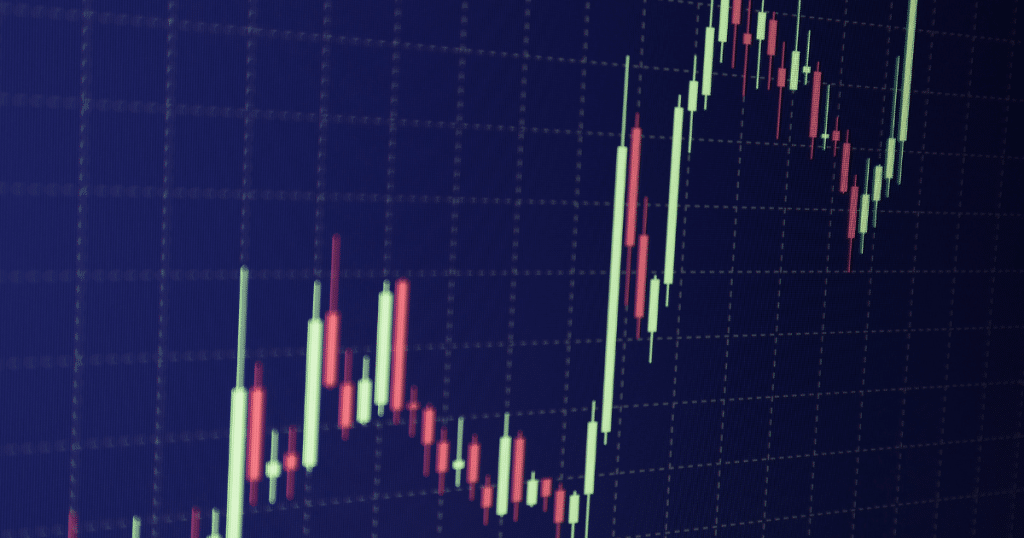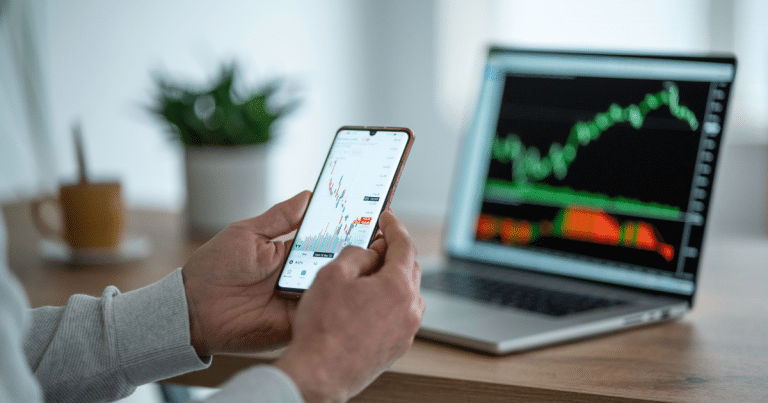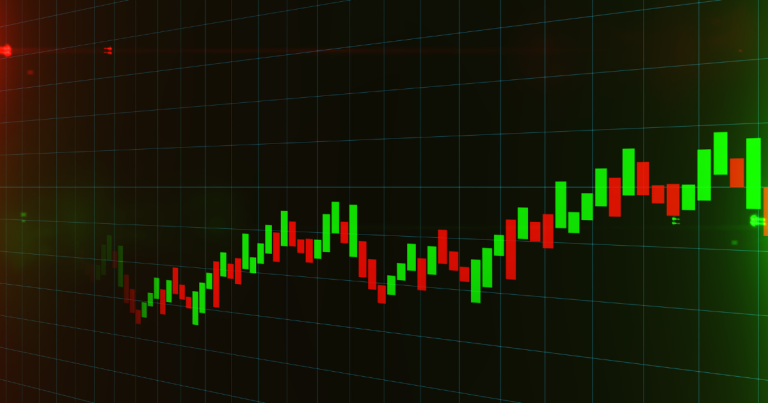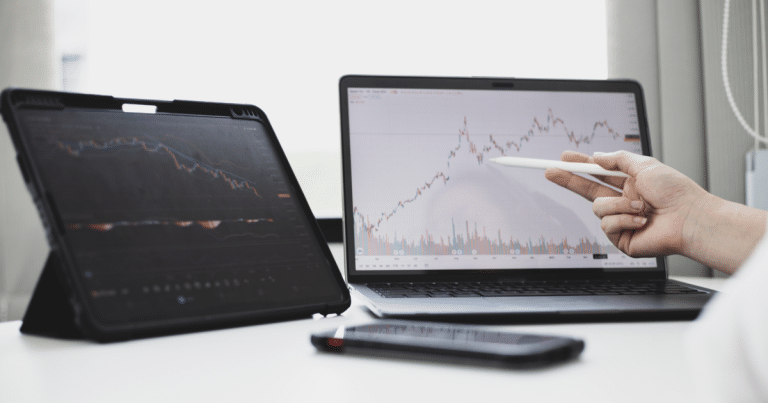
Getting the Hang of VWAP
Volume Weighted Average Price (VWAP) is like a secret weapon for traders and analysts. It mixes price and volume info to give a clear picture of market action.
What’s VWAP and Why Should You Care?
VWAP is a handy tool that tells you the average price a stock has traded at during the day, factoring in both price and volume. It’s a big deal for day traders because it helps spot support and resistance levels. VWAP starts fresh every trading day, giving new insights into a stock’s price trend and value (Investopedia).
Traders use VWAP to see if their trades are on point. If you buy below the VWAP, you got a good deal. If you sell above it, you did well too. Big players like institutional buyers use VWAP to avoid shaking up the market with huge orders. So, VWAP is a must-have for both solo and big-time traders.
How Do You Calculate VWAP?
Calculating VWAP is pretty simple. Here’s the formula:
VWAP = ∑ ( Price × Volume ) ∑ VolumeLet’s break it down:
- Calculate Typical Price:
- Add up the product of price and volume for each trade.
- Calculate Total Volume:
- Add up the volume of all trades.
Then, divide the total typical price by the total volume to get VWAP.
| Step | Calculation |
|---|---|
| 1 | ∑ (Price×Volume) |
| 2 | ∑ Volume |
| 3 | ∑(Price×Volume) ÷ ∑Volume |
Here’s a real-world example:
| Time | Price | Volume | Price x Volume | Cumulative Price x Volume | Cumulative Volume | VWAP |
|---|---|---|---|---|---|---|
| 10:00 AM | $50 | 200 | $10,000 | $10,000 | 200 | $50 |
| 10:30 AM | $52 | 150 | $7,800 | $17,800 | 350 | $50.86 |
| 11:00 AM | $51 | 100 | $5,100 | $22,900 | 450 | $50.89 |
| 11:30 AM | $53 | 250 | $13,250 | $36,150 | 700 | $51.64 |
In this table, VWAP gets updated at each time slot by dividing the cumulative price times volume by the cumulative volume. The final VWAP gives traders an average price for the stock, considering both price and volume traded during the day.
Knowing how to calculate VWAP and why it matters can really boost your trading game, especially when you mix it with other tools like the MACD or EMA. For more on different moving averages, check out our page on moving average types.
How VWAP Can Boost Your Trading Game
The Volume Weighted Average Price (VWAP) is like a secret weapon for traders and big-time investors. Let’s break down how it works for day traders and the big fish in the market.
Day Trading with VWAP
For those who live and breathe intraday trading, VWAP is your go-to buddy. It tells you the average price a stock has traded at during the day, factoring in both volume and price. This helps you figure out where the stock might find support or hit resistance (Investopedia).
Here’s the deal: if a stock’s price is above the VWAP, it’s usually a good sign (bullish). If it’s below, not so much (bearish). This info is pure gold when you’re deciding whether to buy or sell.
| Time (Hour) | Stock Price ($) | VWAP ($) |
|---|---|---|
| 10:00 AM | 50 | 49.5 |
| 11:00 AM | 51 | 50.2 |
| 12:00 PM | 52 | 50.8 |
| 01:00 PM | 50 | 50.5 |
| 02:00 PM | 49 | 50.2 |
VWAP also gives you a peek into a stock’s liquidity and shows where buyers and sellers are meeting in the middle. This helps you keep tabs on price movements and make smarter trades (Investopedia).
Want to up your game? Check out our section on moving average trading strategies.
VWAP for Big-Time Investors
Big players like mutual funds and pension funds love VWAP. They use it to make sure their massive orders don’t mess up the market. By aiming to buy below the VWAP or sell above it, they keep transaction costs low and stay in sync with market volume (Wikipedia).
VWAP is also a big deal in algorithmic trading. Brokers might promise to execute an order at the VWAP, using algorithms to get it done. This is called guaranteed VWAP execution, where the broker makes a commission and the trader sees profit and loss (P&L) (Wikipedia).
| Time (Hour) | Stock Price ($) | VWAP ($) | Order Execution |
|---|---|---|---|
| 10:00 AM | 50 | 49.5 | Buy |
| 11:00 AM | 51 | 50.2 | Hold |
| 12:00 PM | 52 | 50.8 | Sell |
| 01:00 PM | 50 | 50.5 | Hold |
| 02:00 PM | 49 | 50.2 | Buy |
By sticking close to the VWAP, institutional buyers can move in and out of stocks without causing a big splash. This keeps the market steady and their trades smooth (Investopedia).
For more on how VWAP shapes trading and market trends, check out our articles on moving average convergence divergence and exponential moving average crossover strategy.
Why VWAP Rocks for Traders
Volume Weighted Average Price (VWAP) is like a secret weapon for traders and investors. Knowing how to use it can seriously up your game and help you make smarter moves in the market.
Spotting Market Vibes
VWAP is your go-to for figuring out market vibes. Think of it as a yardstick to see how the current stock price stacks up. If the price is above VWAP, folks are feeling bullish. If it’s below, the mood is bearish.
This info is gold for deciding when to jump in or bail out. If the stock price is hanging out above VWAP, it might be a good time to buy. If it’s chilling below, maybe think about selling or holding off.
| Market Mood | Price vs. VWAP | What to Do |
|---|---|---|
| Bullish | Above VWAP | Think About Buying |
| Bearish | Below VWAP | Maybe Sell |
Boosting Your Trading Moves
VWAP isn’t just for spotting trends; it’s a game-changer for your trading strategies. It tells you the average price a stock has traded at, helping you make smarter buy and sell choices (Corporate Finance Institute).
Day traders love VWAP because it shows if recent trades are making or losing money. This can help you set your own entry and exit points. VWAP can also clue you in on potential market reversals, which is super handy in wild markets like penny stocks (StocksToTrade).
VWAP works even better when you pair it with other indicators. Mix it up with moving averages or MACD, and you get a fuller picture of what’s going on in the market. Check out our guides on moving average trading strategies and exponential moving average crossover strategy for more tips.
Mastering VWAP can seriously level up your trading game, making those profitable trades more likely.
Making the Most of VWAP
Teaming Up with Other Indicators
Using the Volume Weighted Average Price (VWAP) alongside other indicators can really sharpen your trading game. Here are some killer combos:
Moving Averages: Pair VWAP with moving averages like the exponential moving average to spot trends. If the stock price is above both VWAP and a moving average, it’s a sign of strong upward momentum.
Stochastic Oscillator: This momentum indicator works well with VWAP to find overbought or oversold conditions. If the price is above VWAP and the Stochastic Oscillator shows overbought, it might be time for a price drop.
| Indicator | Use with VWAP | Outcome |
|---|---|---|
| Moving Averages | Trend spotting | Confirms trend direction |
| Stochastic Oscillator | Momentum check | Flags overbought/oversold |
For more advanced tactics, dive into different moving average types and see how they mesh with VWAP for a killer trading strategy. Check out our guide on moving average trading strategies for more.
Penny Stock Playbook
VWAP is a game-changer for penny stocks, where market sentiment can swing prices wildly. Here’s how to use VWAP to your advantage:
Entry and Exit Points: VWAP helps pinpoint the best times to buy or sell. If the stock price is above VWAP, it’s a good entry point. If it’s below, consider selling.
Market Sentiment: In the volatile world of penny stocks, VWAP can signal potential reversals. A sudden spike above VWAP might mean strong buying interest, while a drop below could indicate selling pressure.
Volume Insight: VWAP includes volume, giving you a clearer picture of the average price. This is crucial for penny stocks, where low liquidity can skew prices.
For more tips on using VWAP in penny stock trading, check out our articles on weighted average calculation and time frame selection.
By combining VWAP with other indicators and applying it to penny stocks, you can make smarter trades and potentially boost your profits.
VWAP in Practice
Real-Time Calculation
The Volume Weighted Average Price (VWAP) is like a trader’s compass, giving a real-time average price based on intraday data. It’s a must-have tool for anyone serious about trading. VWAP starts with the opening price each day and keeps adjusting until the market closes. This constant update means traders always have the latest average price, weighted by volume, right at their fingertips.
Calculating VWAP isn’t rocket science, but it does involve some math. You take the average of the high, low, and close prices for a specific period and then weight that average by the total volume traded during that time. Thankfully, most trading platforms handle this automatically, so you can focus on making smart moves instead of crunching numbers.
Influence on Price Action
VWAP is like a cheat sheet for understanding price action and making smart trading decisions. It acts as a benchmark for when to jump in or get out. If a stock is below the VWAP, it might be time to sell. If it breaks above, it could be a good time to buy.
Here’s how traders use VWAP:
- Entry Point: Wait for the stock to break above the VWAP for a buying opportunity.
- Exit Point: Consider selling if the stock is trading below the VWAP.
- Support and Resistance: Watch for pullbacks to the VWAP, which can act as a support level for buying or a resistance level for selling.
Pairing VWAP with other indicators can make your strategy even stronger. For example, combining VWAP with moving averages can help spot trends, while the Stochastic oscillator can give you a read on momentum.
| Trading Strategy | VWAP Interaction |
|---|---|
| Entry Point | Breakout above VWAP |
| Exit Point | Trading below VWAP |
| Support Level | Bounce off VWAP on pullbacks |
| Resistance Level | Rejection at VWAP on pullbacks |
For those looking to get fancy, you can pair VWAP with moving average trading strategies or use it in a moving average convergence divergence analysis to get a deeper understanding of market trends and potential price moves.
Mastering VWAP can seriously up your trading game, giving you a solid framework for analyzing intraday price action and making informed decisions. For more on how to calculate weighted averages, check out our article on weighted average calculation.
Professional Insights on VWAP
Influence on Short-Term Trading
Traders love the Volume Weighted Average Price (VWAP) for short-term trading. It’s like their secret weapon, helping them figure out market vibes and make smart moves. A popular trick is to buy when the price is below VWAP and sell when it’s above. The idea? Buyers who beat the benchmark create support below VWAP (Investopedia).
| Price Position | Strategy |
|---|---|
| Below VWAP | Go Long |
| Above VWAP | Go Short |
Using VWAP this way, traders can spot sweet entry and exit points, making the most of short-term price swings. They often team up VWAP with other tools like Moving Averages and the Stochastic oscillator. This combo helps them see volume-weighted price levels and the oomph behind price moves (StocksToTrade). Curious about different moving averages? Check out our moving average types page.
Filtering Trading Activity
VWAP is also a handy filter for trading activity. It gives a real-time average price based on intraday data, helping traders see if the current price is in a good range. For instance, some traders use VWAP to set their entry and exit points. If a stock’s below VWAP, they might aim to exit. If it breaks through VWAP, they might go long or use VWAP as a pullback point for entries (CenterPoint Securities).
| Trading Scenario | VWAP Usage |
|---|---|
| Trading Below VWAP | Target Exit |
| Breakthrough VWAP | Long Position |
| Pullback to VWAP | Entry Point |
Using VWAP like this helps traders filter out trades that don’t fit their plan, making their trading more precise. Pairing VWAP with other indicators like moving average convergence divergence can add more layers to their analysis.
For penny stock traders, VWAP is a game-changer. It helps pinpoint the best entry and exit points by showing potential reversals based on market mood (StocksToTrade). This makes VWAP a must-have in any solid trading strategy, especially for those wanting to tap into its full power in the stock market.
Adding VWAP to your trading toolkit not only helps spot market trends but also boosts your overall strategy. For more tips on using VWAP effectively, dive into our detailed guide on weighted average calculation.








definitely a helpful breakdown! i’m already using vwap in my trading but i’m gonna try incorporating some of these tips, especially on how to day trade with it. let’s see how it works out. 🙌
Interesting stuff! But to be honest, I still think it’s a bit too technical for me. I’m just getting started with trading and need to learn the basics before diving into advanced stuff like this. Maybe I’ll come back to this later.
i’ve been using vwap for a while and it’s been a game-changer for my trading. this article is a good reminder of how to use it effectively. i especially liked the part about understanding vwap’s limitations, very important!
This is a great article! I’ve been struggling to understand VWAP, and this finally made it click. Thanks for breaking it down in a way that’s easy to grasp. Now I’m ready to put it into practice and see how it can boost my trades.
VWAP seems like a valuable tool but Im not sure I understand how its calculated Could you elaborate a bit more on that Id love to see a reallife example to better understand how it works